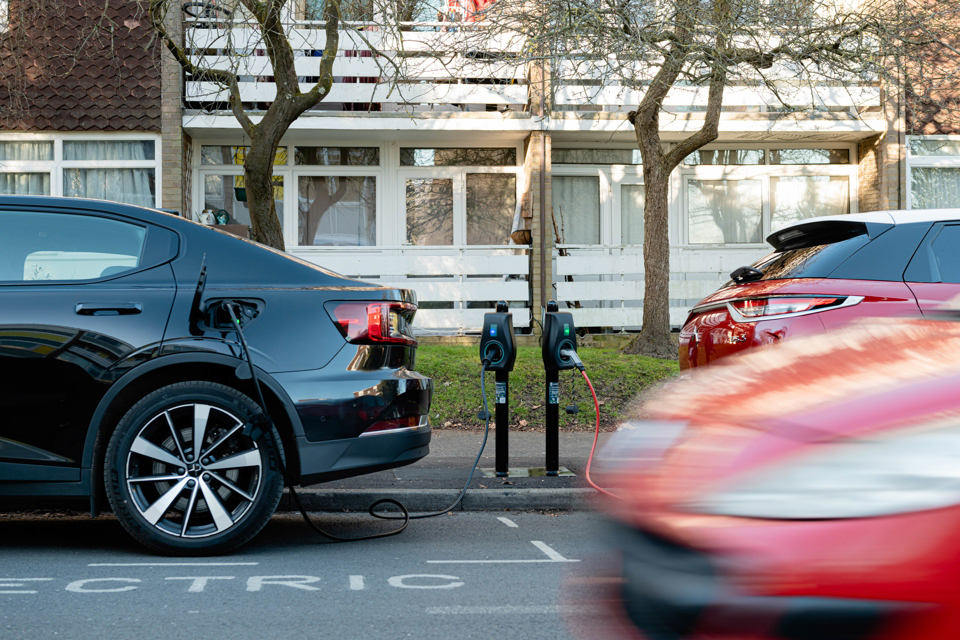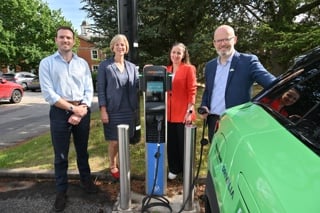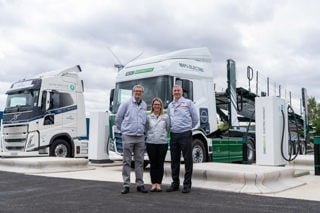In an industry still in its relative infancy with technological advancements not uncommon, it is easy to dismiss talk of “revolutionary” solutions as little more than just marketing speak.
But Chris Pateman-Jones, CEO of Connected Kerb, uses the term with conviction when talking about how his company has become the first public charging infrastructure provider to offer a smart charging capability.
This will lead to users having access to lower prices at its fast charge points, which are located on residential streets, at workplaces and council car parks, as well as the wider benefit of helping to balance the electricity grid, he says.
“At the moment users of the public network do not get half of the benefits that you get when you are charging at home”, adds Pateman-Jones.
“There is a big debate around how expensive public charging is compared to home charging, for example, while a lot of charging takes place at peak times of day.
“Renewable energy is often generated at times when we don’t need it, so we’ve launched a smart charging capability which will shift charging to times when there is an abundance of energy in the grid, without the user seeing any change to their habits.
“That means drivers can plug their vehicle in and if it is not at off-peak times, they can delay their charging until the off-peak rates come in.
“Other providers may offer a day/night tariff, but that is very different from being able to schedule your charging to take advantage of the off-peak tariffs.
“The launch of smart charging is, I think, going to be revolutionary for the industry.”
Currently, Connected Kerb’s off-peak (12am to7am) tariff is 45p per kWh, around 22% lower than the average rate of the UK’s fast (7kW to 22kW) AC charging network.
The smart charging capability is managed through the company’s new app, which users able to specify the amount of charge a vehicle needs and when it needs it by.
The system’s software will manage the charging level to ensure both these requirements are met, as well as using electricity generated at times of peak supply and low demand, therefore accessing lower tariff prices.
The app also features session tracking, providing users with live updates so they can keep tabs on their charging remotely.
It also displays recommended charge points, as well as those in use, helping drivers find the most convenient one.
“By the end of the year I think we’ll be fully dynamic in terms of pricing,” says Pateman-Jones. “We expect to have a daytime price where there is a lot of solar generation taking place, a peak price - probably 7am to 9am and 5pm to 7.30pm - and then a night-time rate.
“We also expect to have fully dynamic personalised pricing, whereby if you’ve got a really high-mileage customer who is regularly charging, doing long, high-volume charging sessions, we can discount the tariffs for them to give them the benefit of the fact they are delivering utilisation across the network.
“I also expect we will be doing personalised tariffs and large-scale fleet tariffs.”
Significant growth
The launch of Connected Kerb’s smart charging capability follows another successful year for the company, with 2023 seeing it install more than 2,100 sockets to take the network to more than 5,500.
According to Zapmap statistics, it is now the third largest charging company in the UK, behind Shell Recharge Ubitricity and Pod Point.
For the second year in a row it was also awarded EV Driver Recommended Network status by Zapmap based on reliability, customer service, ease of use customer support, value for money, and payment options, as well as winning the Frost & Sullivan 2023 European Electric Vehicle Charging Infrastructure Company of the Year Award.
It also entered into a number of new roaming agreements: it is now partnered with Allstar, Bonnet, Bosch, Greenflux, Monta, Octopus Electroverse, Paua, Plugsurfing, Shell and Zapmap.
“It’s lovely to hear that people external to the business are thinking it was a fantastic year for us, but actually we were disappointed because we wanted to deploy a lot more charging points and had the capability to do so,” says Pateman-Jones.
“There were delays with the LEVI (Local Electric Vehicle Infrastructure) funding programme, and if that process had been smoother and faster we could have deployed an awful lot more.
“Last year and the year before – not just for us, but for the whole industry – have been quite hard in terms of there being basically a complete drought of any tenders coming out to the market.
“Thankfully we are seeing contracts progress now, and this year I suspect we will add another 4,000 to 5,000 charging points to the network.
“The year after I would expect the LEVI contracts we tendered for this year will come into deployment.”
One of the LEVI-funded projects Connected Kerb is carrying out is in partnership with South Tyneside Council and will see up to 2,100 new EV charge points deployed over the next 20 years – marking the largest ever deployment of charging infrastructure in the North East.
This will see the North East – home to just 2.7% of the UK’s charging infrastructure despite being home to almost 4% of the UK’s population – receive a 126% boost in its existing network. It has also installed large scale deployments in other areas including Coventry, Cardiff and Kent.
Accelerate transition
Connected Kerb’s expansion – as well as the overall increase in growth in the size of the public charging network - will help accelerate the transition to EVs, says Pateman-Jones.
“Probably the biggest thing that’s different now to when we came into the market in 2017 is that no-one was really talking about residential charging then,” he adds.
“They weren’t really thinking about the massive hole there was in the market to serve people who had to park on the street.
“And that’s something that really animates us as a business: we’re very focused on an equitable transition.
“Unless you provide convenient, affordable, reliable charging in the places to deliver that convenience, you are not going to get people to transition.
“Just telling them they need to transition isn’t the solution, and telling them they need to drive down the road to a charging hub also isn’t the solution for everyone.
“When I talk to fleets, they don’t have a concern around charging at depots and we – and others out there – can support them in installing that charging infrastructure.
“But the on-street piece is where they talk about there being a problem because you have a choice if you’re a fleet operator.
“You can tell people ‘ok, knock off an hour early and sit at a rapid charger and wait for your EV to charge’, or you tell them they’ve got to charge in their own time.
“I don’t think either is a tenable position. I think there are employment risks around that if you’re asking people to do it in their own time.”
Pateman-Jones says the easiest solution is for employees to be able to charge where their car or van sits overnight, whether this is in a local car park a couple of minutes’ walk from their house or on-street.
“That’s where we and others can step in,” he adds. “If you solve that, that is a big barrier you’ve overcome.
“That doesn’t mean I don’t think rapid chargers aren’t really, really important, but if you can guarantee someone, whether they are a fleet or an individual, that they will be able to charge their vehicle when they get to their destination over a longer period of time when it’s not doing anything, there can be a change in behaviour.
“The challenge is that even the largest fleets don’t have that many vehicles in one area so the impact of each individual fleet then going to the local council and saying it needs to deploy chargers doesn’t really make a huge amount of sense.
“Where I think we offer a solution that is really transformational is when we’re working at a city or a county level.
“So, for example, if you go to Coventry we have 1,600 charge points installed. That means any fleet operator who has vans left overnight on streets could make the transition to electric vehicles. It’s very clear.
“Similarly, if you go to Kent, or Surrey, or West Sussex, or Cambridge or any of those other locations where we’re deploying at scale, you can start to make that transition.
“I think fleets need to look at where their vehicles are being based geographically as well as whether they can be charged at home or in depots.”






















Login to comment
Comments
No comments have been made yet.